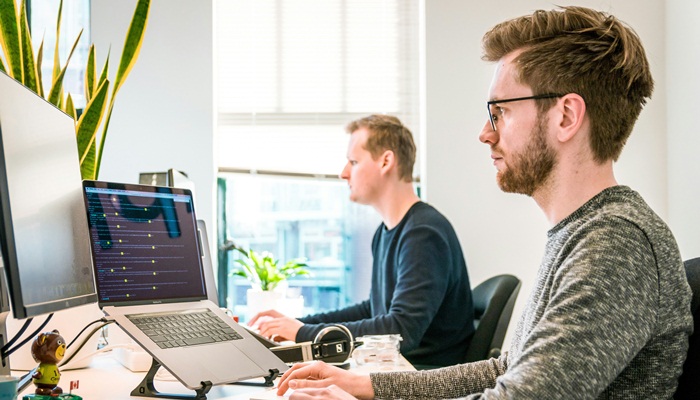The clamour for return to the office and grueling 70-90 hour workweeks grows louder, not merely as a plea for productivity but as a symptom of unease. Are vast commercial spaces lying vacant, their underutilisation an inconvenient truth for corporate honchos? Or do bosses simply prefer to “stare” at employees over their spouses? Perhaps, beneath the rhetoric lurks an aversion to excessive employee comfort – an unwillingness to trust, as evidenced by hybrid mandates that tether workers to office desks every alternate day, depriving them of the freedom to work from wherever ambition or creativity might take them.
Or is it something graver still? A fundamental failure to define performance in a world where the boundaries of labour have dissolved, where AI augments human effort, and where presence no longer equates to productivity. The pandemic forced work into an unprecedented metamorphosis, yet many employers remain anchored to obsolete paradigms, struggling to grasp that in this new order, effectiveness is measured not by the hours clocked within walls but by the value created beyond them.
A fundamental question arises: how do we measure performance in a world where presence is no longer the benchmark of diligence? The traditional office, once the epicentre of observable effort, has been dismantled, replaced by a digital domain where productivity must be assessed through results-driven methods.
For some, particularly those who thrived on oversight and micromanagement, this transition is unsettling. The impulse to measure productivity through sheer visibility – counting hours spent at desks or emails exchanged – must be rendered obsolete. In its place, a more sophisticated, outcome-oriented approach must emerge, one that prizes results over routine. It is not the mere act of working that matters, but the tangible contributions made, the goals achieved, and the ingenuity displayed. Moreover, as AI integrates itself into workflows, the criteria for performance evaluation must also evolve, embracing both human effort and technological augmentation.
To ensure a remote workforce remains engaged and effective, organisations must devise KPIs that transcend conventions. The new metrics must reflect the realities of an environment where work is fluid, dynamic, and untethered from conventional constraints.
Measure contribution through completed tasks: In an office, managers supposedly gauge productivity through sheer observation: employees hunched over keyboards, engaged in discussions, poring over documents. In a remote world, such visual cues vanish. What remains is the actual work completed. Tracking deliverables, rather than minutes spent on a task, provides a more accurate measure of productivity. Project management tools (ClickUp. Trello, etc) can assign, monitor, and evaluate tasks transparently. Breaking down projects into manageable components clarifies expectations and ensures accountability. Each completed task serves as a testament to an employee’s contribution. Interestingly, many of these tolls have shown that the maximum hours an employee can give productively a day is 6, catching both Murthy and Subrahmanian in the wrong.
Understand efficiency through time management: While focussing on output is lag metric, the time taken to achieve results remains a valuable lead indicator. If tasks that should require an hour are stretching into multiple, inefficiencies may lurk beneath – be it in distractions, unclear instructions, or skill gaps. If assignments are consistently completed ahead of schedule, it signifies high efficiency or even underutilisation of potential. Time-tracking tools (Time Doctor, etc) offer insights into work habits without devolving into invasive surveillance. The key lies in using this data judiciously; not for control, but as a means to identify areas for optimisation.
Uphold excellence through quality benchmarks: A high volume of completed tasks means little if the work is substandard. The productivity lies in execution excellence. Different roles necessitate distinct quality metrics: developers must be evaluated on functionality and efficiency, and designers on creativity and precision. AI serves as a valuable ally in maintaining quality. Tools such as GitHub Copilot enhances coding accuracy. Rather than replacing human skill, AI amplifies it, allowing employees to produce better results.
Strengthen cohesion through communication and collaboration: The absence of a physical office eliminates spontaneous interactions: no impromptu brainstorming, no water-cooler gossips. Deliberate communication becomes the linchpin of efficiency, but an overabundance of messages can be just as counterproductive as silence. Establish structured communication channels using platforms like Slack, Zoom or Google Meet to ensure face-to-face engagement when necessary. The objective is not incessant connectivity but purposeful dialogue that drives progress.
Encourage agility through adaptability: High-performing employees have the ability to adapt – whether to new tools, shifting exigencies, or technological advancements. As AI redefines workflows, those harnessing its potential will lead the charge. Cultivate a culture of perpetual learning, and equip employees with access to digital courses and innovation-driven resources. AI-driven solutions serve as catalysts for problem-solving.
Gain perspective through customer and peer feedback: Performance cannot be assessed in isolation. The true impact of work is best understood through those who experience it: customers and colleagues. External feedback provides insights into service effectiveness; peer reviews offer a glimpse into teamwork, reliability, and collaboration. Encourage open, constructive feedback mechanisms to ensure a holistic approach to performance evaluation.
When the office is everywhere, antiquated productivity metrics must yield to a paradigm where ingenuity eclipses mere activity. The illusion that presence equates to performance is obsolete; true excellence lies in impact, not optics. Remote work and AI demand a shift from surveillance to trust, from routine to innovation. The abandonment of direct oversight isn’t an act of surrender, it’s a conduit to liberation. Freed from the suffocating grasp of micromanagement, the team flourishes, their latent potential will amplify, not stifle by incessant scrutiny.
Remote work is not an ephemeral trend but a structural evolution. Enterprises clinging to archaic methods risk obsolescence. Success now hinges on trust, ingenuity, and tangible results. Oscar Wilde had famously quipped that “the bureaucracy is expanding to meet the needs of the expanding bureaucracy.” Let us break this cycle and redefine productivity.
Source – https://www.peoplematters.in/article/culture/evaluating-work-when-the-office-is-everywhere-44922





















